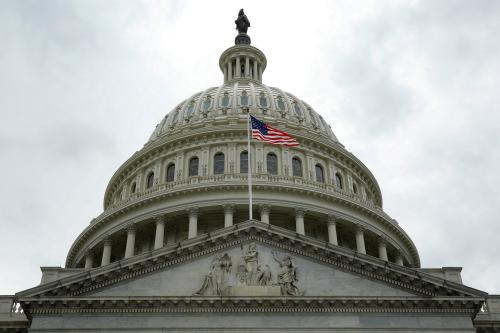Explanatory Journalism is a craft that members of the media have used for quite some time. Its newfound popularity and seemingly industry-wide en vogue status belies a long history and tradition by which journalists offer deep, engaging, detail-oriented accounts of important issues and events. Explanatory journalism sits as a counterweight to the breaking news, in-the-moment type of journalism that offers readers speed over nuance. Both play important roles in the press, but explanatory journalism offers something dynamic. Its benefits are far-reaching and play a serious role in how readers understand and evaluate the news.
In a time when there is a tremendous competition of ideas—some good, others less so—sometimes what you say is as important as how you package and present it. As the world marches toward more abbreviated forms of communication—a tweet, text message, Snapchat—it is ever more essential to convey nuance and context in a digestible way. Those are the challenges facing scholars at think tanks, journalists at new and mainstream media outlets, COMM shops at major corporations, press staff on presidential campaigns, and really anyone tasked with public messaging.
What is often lost in the discussion of explanatory journalism is that we all learn from it in two ways. Such work informs us about the given topic or issue a news item is engaging. That is, explanatory journalism makes us better, more knowledgeable consumers of news. But we also learn to be better producers of news and information when we emulate the style and format of explanatory journalism.
For some time, think tanks like Brookings have delivered ideas and recommendations to readers using a form similar to explanatory journalism. We share with them a common goal of communicating ideas of great consequence in a thoughtful and impactful manner. For that reason, we’ve turned our academic attention to better understanding the functionality and the impact of explanatory journalism. In this new project, we highlight insights from esteemed journalists and scholars alike.
First, we tackle the question of what is explanatory journalism. The term is thrown around flippantly, and perhaps a Potter Stewart-esque means of identifying it (“I know it when I see it”) is apt. Yet, practitioners are the best equipped to define their craft. As mentioned above, the essential nature of a free press means all forms of journalism play important roles; but distinguishing each type allows us to understand more clearly the precise benefits each delivers.
Table: Outlets and Content That Exemplify Explanatory Journalism
|
Outlet |
Content |
Explanatory Components |
|
The New York Times |
Glossary; videos; maps; narrative that includes history and context |
|
|
FiveThirtyEight |
Trump’s South Carolina Win Shows Evangelicals Aren’t Necessarily Voting On Their Faith |
Data and data analysis; case studies |
|
Vox.com |
History; context; expert analysis; data visualization |
|
|
Bloomberg QuickTake |
Policy survey; data visualization; history; context |
|
|
Washington Post |
History; context; consideration of the readers’ perspective |
|
|
Slate |
Context; interactivity |
|
|
The Upshot at The New York Times |
Data analysis; data visualization |
|
|
BuzzFeed |
Case study; photos; data |
Next, we explore how explanatory journalism fits into (or outside of) emerging new media models. Over the past few decades, the news business has changed dramatically. Throughout that time, explanatory journalism has exploded in popularity. This project examines how explanatory journalism has changed the media model and how it has evolved to keep pace with changing business models.
Finally, we examine the democratic benefits of explanatory journalism. According to practitioners, the goal of this kind of reporting is to foster a more knowledgeable and capable public—an essential element to any successful democracy. We consider the unique ways in which this type of news reporting assists democratic values. We also explore the real limitations explanatory journalism faces in its efforts to expand public knowledge, and how those limitations can be dealt with within the field.
The core of this project is a series of interviews with practitioners of explanatory journalism, each of whom has a unique perspective on their own craft: David Leonhardt, the Founding Editor of the Upshot at The New York Times; Max Ehrenfreund, Writer for The Washington Post’s Wonkblog; Amber Phillips, Political blogger for The Fix at The Washington Post; and Ezra Klein, Founder of Vox.com.
Each video engages many of the issues discussed above and as a whole, broadens our understanding of the topic. The video series is introduced by Brookings’ own E.J. Dionne, someone who has straddled both the think tank world and journalism. E.J. brings to the table both the talents of a practitioner of explanatory journalism as well as the knowledge of a media critic and scholar.
To add another layer of analysis to the project, this piece launches a week-long series of blog posts from a group of writers with diverse backgrounds. Richard Fawal, associate vice president for communications at Brookings, will explore the important role that explanatory journalism plays in counteracting the internet’s propensity for misinformation.
Terri Rupar, digital projects editor for the Washington Post, will delve further into the relationship between the internet and explanatory journalism.
Finally, Tom Mann, senior fellow at Brookings and a long time analyst of media, engages the importance of explanatory journalism for democracy and democratic values. With a particular attention to the current political landscape, Tom notes how critical this form of journalism is in countering the challenges hyper-polarization and political dysfunction present for our democracy.
This project is intended to provide a deep dive into a form of journalism committed to the deep dive. In the process, we hope that readers will engage the topic with us. By commenting on blog posts and engaging on social media (#BIMediaProject), we want to broaden the conversation. Each of the participants in this project noted that explanatory journalism is an ever-evolving medium and feedback and engagement from readers is essential to improving the relationship between the public and the Fourth Estate.



Commentary
Shining light on explanatory journalism’s impact on media, democracy, and society
February 24, 2016